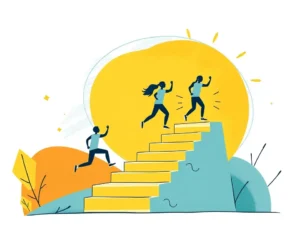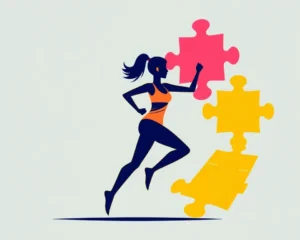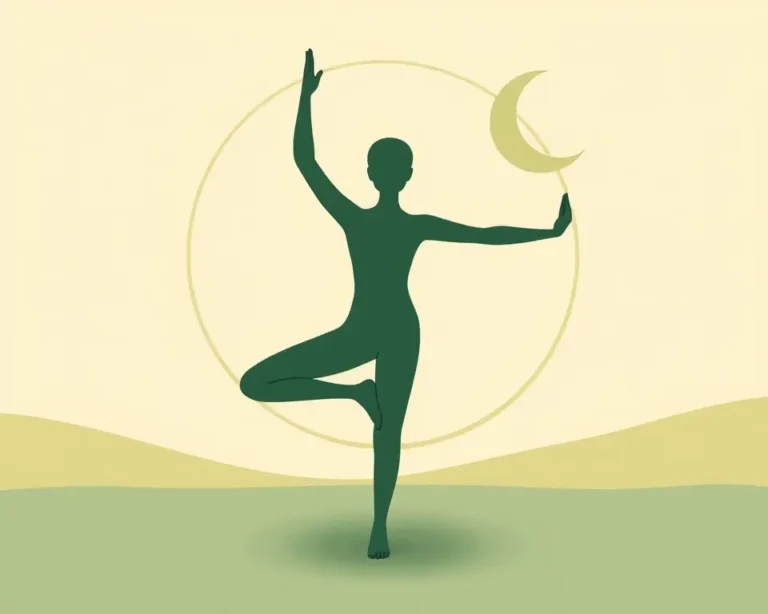As a personal trainer, I understand the importance of both strength and mobility for overall fitness and injury prevention. That’s why I incorporate a short, effective yoga routine into my daily practice. This 15-minute flow is designed to strengthen your body, increase joint mobility, and leave you feeling refreshed and ready to tackle any physical challenge.
Why Yoga for Strength and Mobility?
Yoga isn’t just about flexibility; it’s a holistic practice that offers a multitude of benefits for athletes and anyone looking to improve their physical well-being:
- Increased Strength: Many yoga poses require you to support your own body weight, building strength in your arms, legs, and core.
- Improved Flexibility: Yoga stretches lengthen muscles and increase range of motion, improving flexibility and reducing the risk of injury.
- Enhanced Mobility: Yoga targets joint mobility, helping to improve the function and movement of your hips, shoulders, spine, and other key areas.
- Better Balance and Coordination: Balancing poses challenge your stability and coordination, improving your overall body awareness.
- Stress Reduction: Yoga promotes relaxation and mindfulness, helping to reduce stress and improve mental clarity.
The 15-Minute Yoga Mobility Routine
This routine is designed to be a quick and effective way to improve your strength and mobility. You can do it as a standalone practice or incorporate it into your existing workout routine as a warm-up or cool-down.
Important Considerations:
- Listen to your body: Never push yourself beyond your limits. If you feel any pain, stop and modify the pose or rest.
- Breathe deeply: Focus on your breath throughout the practice. Inhale deeply to expand your lungs and exhale completely to release tension.
- Modify as needed: Feel free to modify the poses to suit your individual needs and abilities.
- Stay consistent: Aim to practice this routine several times a week for best results.
Warm-up (2 minutes)
- Cat-Cow (1 minute): Start on your hands and knees, with your wrists under your shoulders and your knees under your hips. Inhale as you drop your belly and lift your gaze towards the ceiling (Cow pose). Exhale as you round your spine and tuck your chin to your chest (Cat pose). Repeat for 1 minute, moving with your breath.
- Wrist Circles (30 seconds each direction): Sit comfortably and interlace your fingers. Make gentle circles with your wrists in one direction for 30 seconds, then reverse the direction for another 30 seconds.
Main Sequence (10 minutes)
- Downward-Facing Dog (1 minute): Start on your hands and knees, then lift your hips up and back, forming an inverted V-shape. Press your hands firmly into the ground and lengthen your spine. Pedal your feet to stretch your calves.
- Plank (30 seconds): From Downward-Facing Dog, shift your weight forward into a plank position. Keep your body in a straight line from head to heels, engaging your core.
- Cobra Pose (30 seconds): From plank, lower your body to the ground. Place your hands under your shoulders and inhale as you lift your chest off the ground. Keep your elbows slightly bent and your shoulders relaxed.
- Low Lunge with Twist (30 seconds per side): Step your right foot forward into a low lunge, keeping your knee over your ankle. Place your left hand on the ground and twist your torso to the right, reaching your right arm towards the ceiling. Hold for 30 seconds, then repeat on the other side.
- Warrior 2 (1 minute per side): Step your right foot forward into a wide stance, turning your right foot out 90 degrees and your left foot in slightly. Bend your right knee over your ankle, keeping your torso upright. Extend your arms out to the sides, parallel to the ground. Hold for 1 minute, then repeat on the other side.
- Triangle Pose (30 seconds per side): From Warrior 2, straighten your right leg and reach your right arm forward, then down towards your shin, ankle, or the ground. Extend your left arm towards the ceiling, keeping your torso open. Hold for 30 seconds, then repeat on the other side.
- Standing Forward Bend (1 minute): Stand with your feet hip-width apart and bend forward from your hips, keeping your back straight. Reach your hands towards the ground or hold onto your shins or ankles. Let your head hang heavy.
- Squat (1 minute): Stand with your feet slightly wider than hip-width apart and turn your toes out slightly. Lower your hips down as if you’re sitting in a chair, keeping your back straight and your chest lifted. Bring your hands together in front of your chest.
- Reverse Table Top (1 minute): Sit on the floor with your knees bent and your feet flat on the floor. Place your hands behind you, fingers pointing towards your feet. Press into your hands and feet to lift your hips off the floor, creating a straight line from your shoulders to your knees.
Cool-down (3 minutes)
- Child’s Pose (2 minutes): Start on your hands and knees, then sit back on your heels and extend your arms forward, resting your forehead on the ground.
- Corpse Pose (1 minute): Lie on your back with your arms at your sides and your palms facing up. Close your eyes and relax your entire body.
Pose Breakdown and Modifications
Here’s a more detailed look at some of the key poses in this routine, along with modifications to make them accessible for all levels:
- Downward-Facing Dog:
- Benefits: Stretches the hamstrings, calves, and spine; strengthens the arms and shoulders.
- Modifications: If you have tight hamstrings, bend your knees. If you have wrist pain, try placing your hands on blocks or rolling up the front of your mat for padding.
- Plank:
- Benefits: Strengthens the core, arms, and shoulders.
- Modifications: If you’re new to plank, start by holding it for shorter intervals (15-20 seconds) and gradually increase the time. You can also modify by dropping your knees to the ground.
- Cobra Pose:
- Benefits: Strengthens the back muscles and opens the chest.
- Modifications: If you have lower back pain, keep your elbows closer to your body and lift your chest only slightly off the ground.
- Low Lunge with Twist:
- Benefits: Stretches the hip flexors and strengthens the legs. Improves spinal mobility.
- Modifications: If you have knee pain, place a blanket under your back knee. If you can’t reach the ground with your hand, place it on a block.
- Warrior 2:
- Benefits: Strengthens the legs and core. Opens the hips and chest.
- Modifications: If you have knee pain, make sure your knee is aligned over your ankle and doesn’t extend past your toes. You can also shorten your stance.
- Triangle Pose:
- Benefits: Stretches the hamstrings, hips, and spine. Strengthens the legs and core.
- Modifications: If you can’t reach your shin, ankle, or the ground, place your hand on a block. You can also bend your front knee slightly.
- Standing Forward Bend:
- Benefits: Stretches the hamstrings, calves, and spine. Relieves stress and anxiety.
- Modifications: If you have tight hamstrings, bend your knees. You can also hold onto your elbows instead of reaching for the ground.
- Squat:
- Benefits: Strengthens the legs and glutes. Improves hip mobility.
- Modifications: If you have trouble squatting deeply, place a block under your hips for support. You can also hold onto a chair or wall for balance.
- Reverse Table Top:
- Benefits: Strengthens the arms, legs, and core. Opens the chest and shoulders.
- Modifications: If you have wrist pain, point your fingers out to the sides instead of towards your feet. You can also keep your hips lower to the ground.
- Child’s Pose:
- Benefits: Relieves stress and anxiety. Stretches the hips, thighs, and ankles.
- Modifications: If you have knee pain, place a blanket between your thighs and calves. You can also widen your knees and bring your big toes together to touch.
- Corpse Pose:
- Benefits: Promotes relaxation and stress reduction.
- Modifications: If you have lower back pain, place a pillow under your knees. You can also cover yourself with a blanket for added comfort.
Integrating Yoga into Your Training
As a personal trainer, I often recommend this routine to my clients as a way to improve their overall fitness and prevent injuries. Here are some tips for integrating yoga into your training:
- Warm-up: Do this routine before your workouts to prepare your body for exercise.
- Cool-down: Do this routine after your workouts to help your muscles recover.
- Rest days: Do this routine on your rest days to improve your flexibility and mobility.
- Listen to your body: Don’t push yourself too hard, especially when you’re first starting out.
Final Thoughts
This 15-minute yoga mobility routine is a simple yet powerful tool for strengthening your body and bulletproofing your joints. By incorporating this practice into your daily routine, you can improve your overall fitness, prevent injuries, and feel your best. So, roll out your mat and give it a try!







